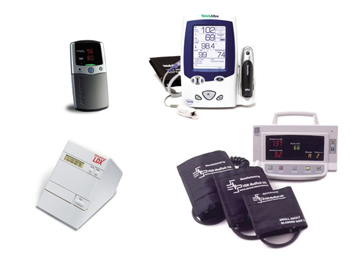July 27, 2009
Is That Medical Device Safe And Effective? Who Knows?

By Michael D. Shaw
In the wake of the ObTape mess—more on that later—people are finally beginning to take a hard look at just how the FDA approves medical devices.
Most consumers and many health care workers are unaware that there is a big difference in the approval process between drugs and devices. To market a new drug, the manufacturer must go through a lengthy and expensive process, generally involving clinical trials. Even that process is not always sufficient to spot dangerous side effects of the drugs, which may not appear for years.
Device approval is completely different. Medical devices are classified (Classes I, II, and III) based on the level of control necessary to assure the safety and effectiveness of the device—Class III being the most stringent. The FDA maintains an extensive database to determine which Class a device would fall into. Here are some typical examples:
- Class I – tongue depressors, bedpans, elastic bandages
- Class II – x-ray machines, powered wheelchairs, infusion pumps, surgical needles and suture material
- Class III – heart valves, silicone gel-filled breast implants, implantable pacemaker pulse generators
Many Class I devices are exempt, and do not require so-called premarket review. In such cases, the manufacturer need only register its facility with the FDA. All other devices are subject to one of two types of FDA premarket review before they may be legally marketed in the United States.
- Premarket approval [PMA]: The manufacturer must submit evidence, typically including clinical data, providing reasonable assurance that the new device is safe and effective. A successful submission results in FDA approval.
- Premarket notification [510(k)—Based on section 510(k) of the Food, Drug, and Cosmetic Act]: The manufacturer must demonstrate to FDA that the new device is substantially equivalent to a device already legally on the market that does not require a PMA. A successful submission results in FDA clearance.
“Substantially equivalent” means that the device has the same intended use as another legally marketed device (the “predicate device”) and the same technological characteristics, or different technological characteristics and submitted information demonstrates that the device is as safe and effective as the legally marketed device and does not raise different questions of safety or effectiveness.
Notably, it is not legal to advertise a 510(k) cleared device as “FDA-approved.” Rather, it is “FDA-cleared.”
For PMA, the device review user fee is $200,725 or $50,181 for a small business. For 510(k), the device review user fee is $3693 or $1847 for a small business. A “small business” has annual gross sales and revenues of $100 million or less. The PMA fee is waived for the first premarket application from firms with less than $30 million gross receipts or sales.
Not surprisingly, far more devices are cleared than approved. In the period 2003-2007 (based on FDA’s fiscal year) 14,999 devices were cleared and 1001 were approved. Thus, it is true that most medical devices are not specifically tested for safety and effectiveness.
The key here is determining the validity of substantial equivalence in each case. Even then, the procedure can be gamed, if a device is in fact substantially equivalent, but will be marketed for other purposes. For example, several quack devices said to measure skin resistance are accompanied by software that fabricates diagnoses and recommends products.
Given the public’s demand for more and better health care, the 510(k) process can streamline getting devices into the marketplace. But, as the old joke says: “There’s low price, high quality, and quick delivery. Which two do you want?”
Regarding ObTape Vaginal Sling, until taken off the market, this was a medical device meant to stop the uncontrollable flow of urine as a result of urinary stress incontinence, a medical condition affecting about two million American women. FDA clearance was granted based on substantial equivalence to the urethral support tape products manufactured and marketed by Johnson & Johnson, 510(k) No: K974098 and American Medical Systems, 510(k) K013355.
As it happens, clearance for the Johnson & Johnson device was based on the Protegen sling, which was forced off the market, based on FDA findings that it was “adulterated and misbranded.” Since proving substantial equivalency is all that is required for a 510(k) clearance, the clearance is not affected if some problem occurs with a predicate device.
Numerous adverse incident reports came into the FDA on the ObTape, starting in 2004. While adverse incidents do not necessarily mean that the product is defective—and the manufacturer still defends ObTape—in 2006, the product was withdrawn. Through litigation, expert opinion suggests that there were substantial differences between the ObTape and its predicate device, including being made of much more dense material, not porous enough to allow tissue and capillaries to grow through it so it is fully incorporated in the body, rather than becoming encapsulated and expelled.
Moreover, once clearance was granted, the manufacturer of ObTape began to promote its unique features, sufficient enough to get it patented! In other words, ObTape was substantially equivalent enough to be cleared, but substantially unique enough to earn a patent.
Beyond the equivalence issue is good old political pressure. Media sources have documented this sort of thing recently. In one case, a PMA was granted to a certain mammography device even though scientists at the agency recommended against approval, charging that the company had not sufficiently tested the device. In another, clearance was granted to a knee implant, that many felt should have gone through the PMA process instead.
Inasmuch as the FDA is a government agency, politics cannot be kept out of the equation. But it is clear that device clearance and approval has to be reformed. A first step would be much tighter guidelines on equivalency.

